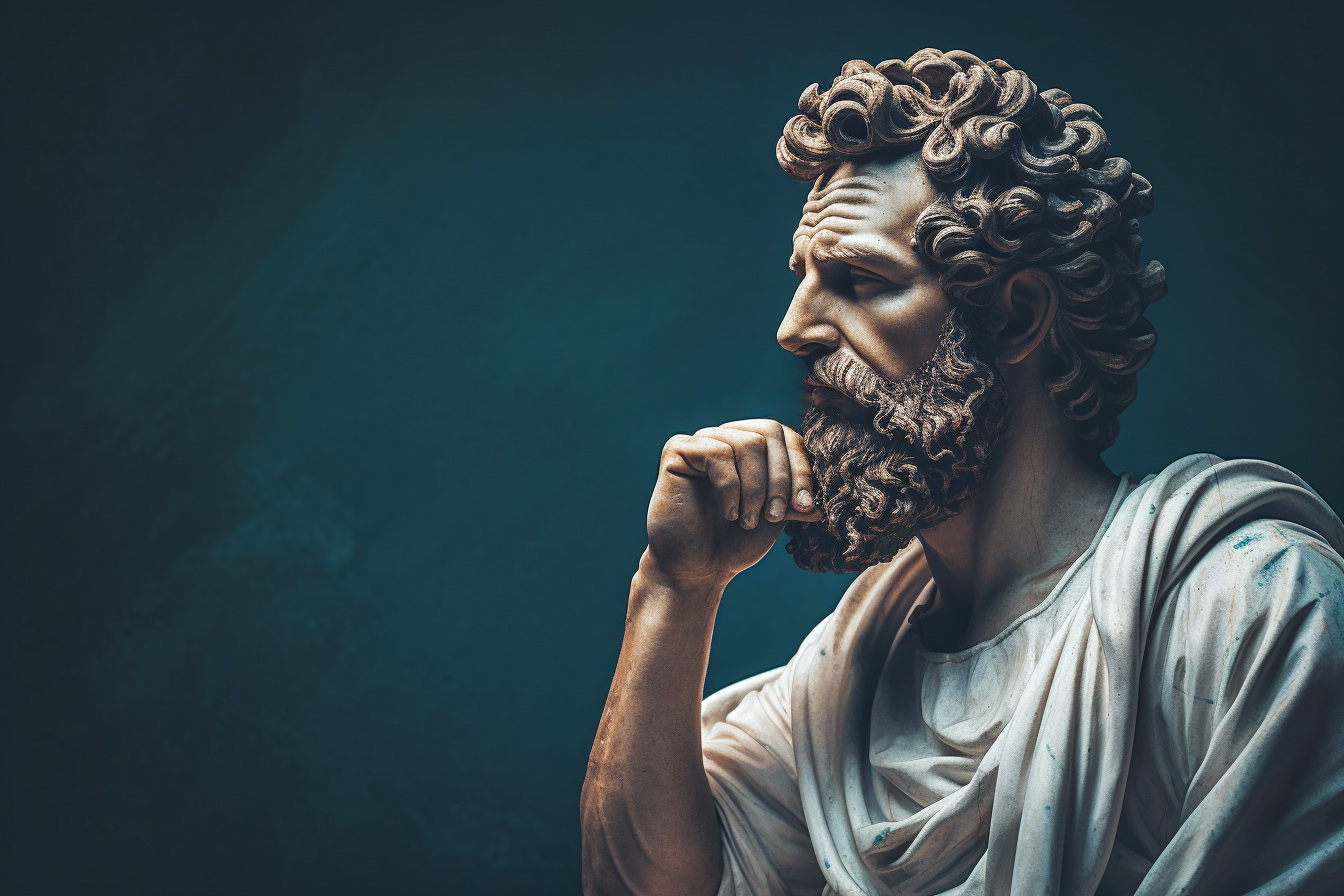For over two thousand years, Stoicism has provided a philosophical framework for living a life of wisdom, virtue, and tranquility. Since its founding in ancient Greece, this influential school of thought has endured as an invaluable guide to overcoming adversity and achieving emotional resilience and perspective. Today, in an increasingly turbulent world, Stoicism’s core principles and practices are seeing renewed interest and relevance.
Stoicism was established by the philosopher Zeno of Citium in Athens in the early 3rd century BC. The name derived from the Stoa Poikile (Painted Porch), where Zeno would teach his students. Stoicism was profoundly influenced by classic Greek philosophers like Socrates and earlier schools of thought like Cynicism that emphasized ethics and virtue over wealth and pleasure. Prominent Stoic philosophers like Cato The Younger, Seneca, Epictetus, and the Roman emperor Marcus Aurelius later brought Stoic teachings to the forefront of Roman society.
At its heart, Stoicism stresses the four cardinal virtues of wisdom, justice, courage, and moderation. The Stoics believed stability, perspective, and happiness (eudaimonia) could be achieved by living rationally and virtuously while focusing only on what is within one’s control. This article will provide an overview of Stoicism’s history, evolution, and core tenets. It will examine the fundamental practices and exercises the Stoics used to cultivate resilience, emotional regulation, and mental clarity. Studying Stoic philosophy provides tangible tools and perspectives that remain relevant for living with purpose and tranquility amidst hardship and uncertainty.
History and Origins of Stoicism
Zeno of Citium founded Stoicism in Athens during the early 3rd century BC. Zeno taught at a colonnade known as the Stoa Poikile, or “Painted Porch,” hence the name “Stoicism.” Classic Greek thinkers like Socrates and the austerity and ethics of the Cynic philosophers influenced the philosophy. Renowned Stoics like Cato The Younger, Seneca, Epictetus, and Marcus Aurelius later brought Stoic teachings to ancient Rome, where they gained great popularity.
For example, the Roman emperor Marcus Aurelius’ “Meditations” is a seminal Stoic text offering profound reflections on gaining wisdom and tranquility.
Core Principles and Beliefs
At its foundation, Stoicism asserts that virtue is the greatest good and that living rationally in harmony with nature allows one to flourish. By recognizing what is within our control and what is not, practicing self-discipline with emotions and desires, and focusing on moral excellence over pleasure or wealth, the Stoics believed we gain resilience and inner freedom.
For instance, the dichotomy of control, differentiating what we can and cannot control, is essential for not wasting energy on fruitless worry.
Key Practices and Exercises
Stoics regularly engaged in spiritual exercises to build virtue and achieve apatheia (freedom from disturbance). These included negative visualization (imagining worst-case scenarios), contemplating impermanence, focusing only on the present moment, regular self-reflection, and pursuing progress over perfection.
For example, contemplating our mortality helps us prioritize what matters and let go of petty concerns.
Impact and Relevance Today
Modern cognitive-behavioral therapy evolved directly from Stoic principles. Stoicism has profoundly influenced thinkers from Adam Smith to Ralph Waldo Emerson. Today, Stoicism sees renewed interest as it offers powerful tools to develop resilience, emotional regulation, and mental clarity amidst turbulent times.
Reading classic Stoic texts can provide wisdom and perspective to overcome life’s inevitable adversities and direct energy only toward what we can control.
Case Study: Stoicism in Action
Sarah was struggling with anxiety after losing her job. She began reading about Stoic philosophy and its techniques for cultivating tranquility and resilience. She started each day reflecting on how to respond wisely to whatever arose. She focused her energy only on perfecting her resume and interviewing skills. When anxious thoughts crept in, she paused and concentrated only on the present. Visualizing worse-case scenarios helped her prepare for all outcomes with equanimity.
Implementing Stoic practices allowed Sarah to view her job loss as an opportunity for growth, not a catastrophe. Despite ongoing challenges, she pursued each day with calm purpose. Her anxiety dissipated as she took control of her judgments and perceptions. Though not everything was in her power, Sarah realized her responses always were. Her study of Stoicism provided strength and wisdom that helped her land a new job and face all of life’s adversities with grace.
Conclusion
For over 2000 years, Stoicism has provided concrete tools and principles for overcoming adversity and achieving lasting fulfillment. By living logically and virtuously, focusing only on what we can control, and maintaining emotional resilience, we gain an inner refuge of wisdom and perspective. Studying Stoic philosophy offers us a framework for finding meaning and purpose regardless of external circumstances.
From its origins in ancient Greece to its lasting influence today, Stoicism’s power lies in its ability to impart timeless insights about resilience, mindfulness, and what constitutes a well-lived life. Anyone can benefit from this knowledge to face life’s inevitable ups and downs with courage and poise. In a chaotic world, Stoic practices offer us clarity, control, and the capacity to triumph over events and circumstances beyond our control. By internalizing its lessons, we ready ourselves to navigate the turbulence of life with virtue, wisdom, and unassailable equanimity.
Over two thousand years later, a philosophy born in the Stoa Poikile of ancient Athens still resonates. It offers the framework for living life to the fullest regardless of the vagaries of circumstances and fate. Stoicism helps us differentiate what we can and cannot control and, in the process, transforms our experience of life’s ups and downs. By internalizing the lessons passed down from centuries of great Stoic thinkers, we ready ourselves to navigate the turbulent waters of life with courage, purpose, and poise.
